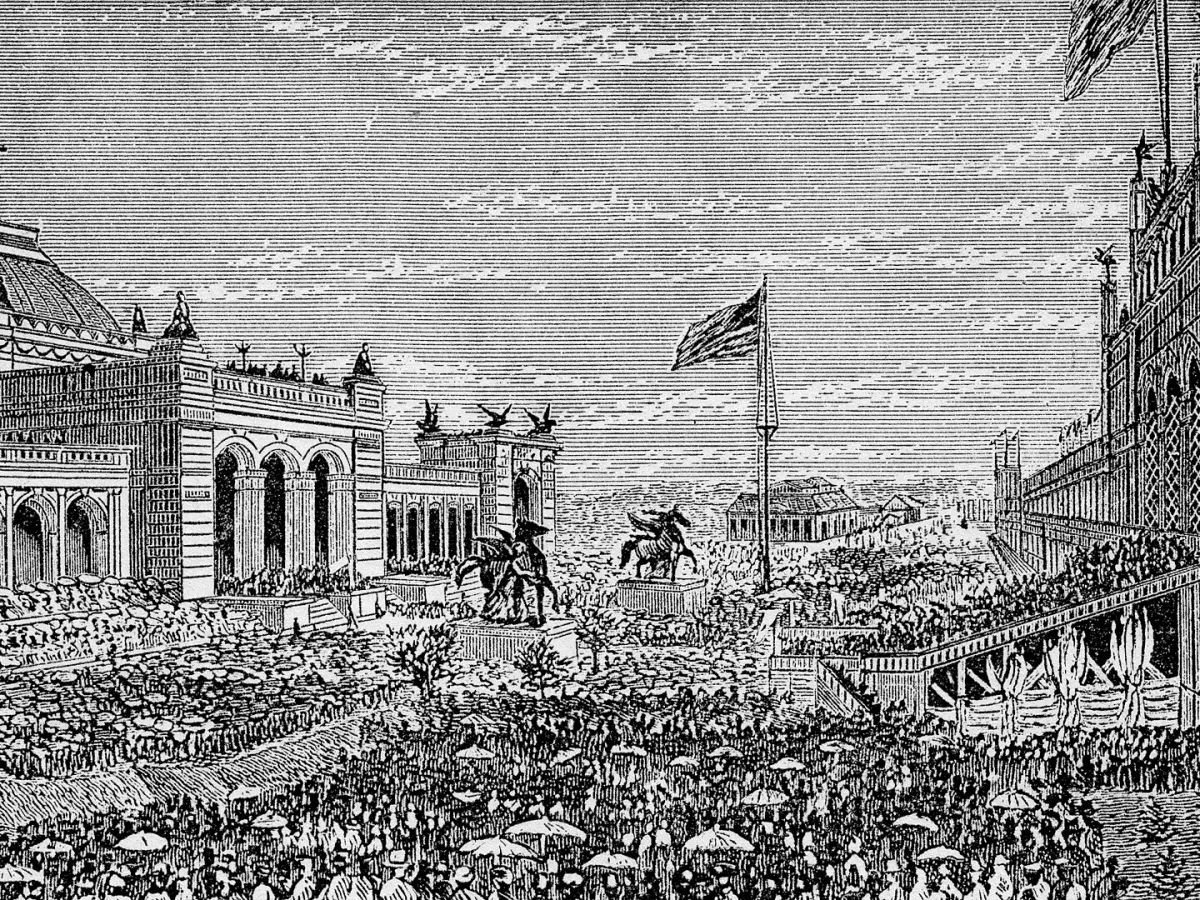
Eliot Noyes (1910 – 1977) was an industrial designer from the United States.
Education
From 1928 to 1932, he studied architecture at Harvard University, followed by stints at the Graduate School of Design from 1932 to 1935 and 1937 to 1938.
Biography
He worked for the German Modernists Walter Gropius and Marcel Breuer, whom he had met at Harvard, in 1939 before becoming Curator of Industrial Design at the Museum of Modern Art (MOMA) in New York from 1940 to 1942 and 1945 to 1946, as he developed an affinity for a European aesthetic.
Following the Modernist drive that had dominated the museum’s exhibits in the 1930s, he curated the Organic Design in Home Furnishings show (1941–2), which brought Charles Eames and Eero Saarinen to prominence.
Following his appointment as design director at Norman Bel Geddes’ design firm in 1946, he founded his design firm the following year. He became design director at IBM in 1956, after previously serving as a consultant to the firm. He employed graphic designer Paul Rand to develop the company’s corporate logo and commissioned Eames to work on IBM exhibits and films and Breuer to design buildings.

He was inspired by the Italian office equipment company Olivetti’s corporate design policy. He gave IBM’s buildings, interiors, goods, and publicity a sleek, powerful, and technologically sophisticated look.
Clients
The clean-lined, almost sculptural Selectric golfball typewriter was one of Noyes’ most well-known prototypes for IBM (1961). He later served as a design consultant for Mobil (1964–77), the Cummins Engine Company (1953–77), and Pan Am (1969–72) and consulted on corporate identity design for Westinghouse (1960–76). His presidency of the Aspen International Design Conventions, which started in 1951, had a significant impact on design thought. He also contributed concept articles to Consumer Union Reports, the Consumers’ Union’s public face, an influential consumer advocacy organisation.
Source
Woodham, J. M. (2006). A dictionary of modern design. Oxford University Press.
More American Designers
Ross Franklin Littell (1924 – 2000) American Textile and Furniture Designer
Ross Franklin Littell (1924 – 2000) was an American textile and furniture designer known for his practical, innovative, and minimalist…
Keep readingLuba Lukova: The Power of Visual Metaphor in Design
Luba Lukova, a New York-based artist from Bulgaria, creates impactful artwork addressing social issues like justice and freedom through minimalist…
Keep readingThe Hoosier Kitchen Cabinet: Revolutionizing the American Kitchen
The Hoosier Kitchen Cabinet revolutionized early 20th-century kitchen efficiency, empowering homemakers and becoming a beloved vintage design icon.
Keep readingThe Egyptian Style of Decoration: A Timeless Influence
The Bembine Table of Isis and various Renaissance artifacts revived Egyptian motifs in Western art, influencing design through centuries, culminating…
Keep readingHenry Hobson Richardson: Architect of the American Romanesque Revival
Henry Hobson Richardson revolutionized 19th-century architecture with his Richardsonian Romanesque style, embodied in iconic buildings like Trinity Church, influencing generations…
Keep readingThe Champagne Chair: A Toast to Timeless Modernism
The Champagne Chair, designed by Erwine and Estelle Laverne in 1957, blends transparency and modern materials, symbolizing mid-century design innovation…
Keep readingThe Peacock Vase by Louis Comfort Tiffany: A Masterpiece of Blown Glass
The Peacock Vase by Louis Comfort Tiffany, crafted circa 1901, highlights exceptional Art Nouveau skills in blown glass with its…
Keep readingOccupational Outlook for Industrial Designers: Career Prospects and Growth Trends
Industrial design merges art and engineering to create functional products. Key roles include research, prototyping, and collaboration, with a positive…
Keep readingThe Essence of Apple Design: A Deep Dive into Human-Centered Innovation
Apple’s design philosophy, rooted in clarity, efficiency, and aesthetic integrity, shapes user experience across its ecosystem, guiding developers through its…
Keep readingUnlock Creative Potential: Insights from Adobe
The Adobe Design Blog offers insights into design innovation, exploring AI tools, typography, user experience, and inspiring stories to empower…
Keep readingUrban Design Forum: Shaping a Just and Thriving New York City
The Urban Design Forum drives urban innovation in New York City, promoting social justice and collaboration among civic leaders to…
Keep readingCNN Style: A Global Lens on Design, Fashion, and Culture
CNN Style significantly influences global design, fashion, and architecture through in-depth features, addressing contemporary issues and combining creativity with technology…
Keep readingExploring Motorola’s Impact on Telecommunication Design
Motorola has redefined telecommunications with innovative designs and technologies since 1928, influencing both mobile aesthetics and modern living through iconic…
Keep readingThe Evolution of Systems Furniture: Functionality Meets Flexibility
Systems furniture has revolutionised the way we design and utilize interior spaces. Combining modularity, adaptability, and efficiency, this design concept…
Keep readingWarren McArthur: A Pioneer of Modern Furniture Design
Warren McArthur was a pioneering designer who transformed furniture design through innovative use of tubular metals and modular systems, influencing…
Keep readingPaul Nelson: Innovator in Healthcare Architecture
Paul Nelson was an influential architect known for revolutionizing healthcare design through modernist principles, focusing on functionality, technology integration, and…
Keep readingThe Seeburg Audiomation: A 1960s Audio Revolution
The 1968 Seeburg Audiomation Stereo System revolutionized home audio with automated playback, stylish designs, and the ability to play 50…
Keep readingA-Z Guide to Industrial Design Concepts
Industrial design combines creativity and functionality, covering essential concepts from aesthetics to zero-waste practices, forming a comprehensive guide for designers…
Keep readingModern Art in New York in the Early Twentieth Century
In early 20th-century New York, European influences and American innovation converged, establishing the city as a modern art hub through…
Keep readingThe Evolution of American Design Principles
The American Design Ethic combines functionality, innovation, and aesthetics, evolving from colonial craftsmanship to modern streamlined objects, reflecting societal values…
Keep readingThe Evolution of American Fashion: Ready-to-Wear Explained
The “Ready to Wear” and “American Look” revolutionized American fashion, emphasizing accessibility, comfort, and practicality, reflecting societal changes and cultural…
Keep readingFurniture Design 1940 to the Present in the United States
The evolution of American furniture design since 1940 showcases a shift from traditional craftsmanship to modernism, driven by technology and…
Keep readingThe Legacy of George Grant Blaisdell and the Zippo Lighter
George Grant Blaisdell (1895–1978) invented the iconic Zippo lighter, blending functionality with design, gaining popularity during WWII, and leaving a…
Keep readingThe Design Evolution of Toledo Scales by Norman Bel Geddes
Norman Bel Geddes transformed Toledo’s counter scales in the late 1920s by enhancing their design for improved aesthetics and functionality,…
Keep readingAldo van den Nieuwelaar: Pioneer of Minimalist Design
Aldo van den Nieuwelaar was a Dutch minimalist designer influential for his geometric works, including the TC6 lamp and A’dammer…
Keep readingHerman Miller: Iconic Furniture and Decorative Design
Herman Miller, founded in 1905, revolutionized furniture design through collaborations with iconic designers, creating functional, aesthetic pieces that influence modern…
Keep readingExperiences at the Centennial Exhibition: Chaos and Innovation
The 1876 Centennial Exhibition in Philadelphia marked the first official World’s Fair in the U.S., celebrating American independence with innovations,…
Keep readingChantal Cookware: A Legacy of Innovation and Design Excellence
Chantal Cookware, founded by Heida Thurlow, pioneered innovative kitchenware for over fifty years. Recently acquired by J.A.M. Enterprises, it continues…
Keep readingSet Design Aspects of the US Presidential Debate: What Does It All Mean? (Opinion Piece)
The US presidential debate stage is meticulously designed to convey authority and symbolism, reinforcing candidates’ messages and engaging the audience.…
Keep readingTunnel Mailbox by Roy Joroleman: An Icon of Standardization in Rural Mail Delivery
The tunnel mailbox, designed by Roy Joroleman in 1915, revolutionized rural mail delivery in the U.S. Its iconic design reflects…
Keep readingCase Study: The Buick Evocador Concept – Redefining a Classic Brand with Concept Art
The Buick Evocador Concept redefines the brand with futuristic design elements, blending tradition with innovation, appealing to new drivers, and…
Keep readingColdspot Super Six Refrigerator: A Design Revolution
The Coldspot Super Six refrigerator, designed by Raymond Loewy for Sears Roebuck, revolutionized household food storage, blending form and function,…
Keep readingNorman Bel Geddes: Visionary of Modern Design
Norman Bel Geddes, a visionary American designer, revolutionized 20th-century design through his futuristic vision and innovative contributions to industrial and…
Keep readingThe Pussy Power Hat: A Symbol of Solidarity and Resistance
The Pussy Power Hat, a symbol of feminist resistance and unity, gained global recognition during the Women’s March, with its…
Keep readingEliel Saarinen’s Tea or Coffee Urn: A Masterpiece of American Modernist Metalwork
Eliel Saarinen’s 1934 tea or coffee urn, a quintessential example of American Modernist metalwork, showcases fusion of artistry and industrial…
Keep readingErwine and Estelle Laverne: Pioneers of Mid-Century Modern Design
Erwine & Estelle Laverne were influential mid-century American designers, blending art and functionality in minimalist furniture. Their legacy endures despite…
Keep readingThe Herter Brothers and Their Mark on the Gilded Age of American Design
The Herter Brothers, pioneers of American decorative arts, shaped the opulent Gilded Age aesthetic through integrated interior design and influential…
Keep readingPaul T. Frankl: The Architect of American Modernism and the Skyscraper Style
Paul T. Frankl, an Austrian-born designer, pioneered American modernism with his iconic Skyscraper style furniture, founding AUDAC, and embracing innovation…
Keep readingUnveiling the Past: The 1930 International Exhibition of Cotton Textiles and Decorative Metals
The 1930 International Exhibition of Cotton Textiles and Decorative Metals showcased the fusion of traditional craftsmanship and industrial innovation, influencing…
Keep readingThe Enigma of Apple’s Logo: A Chronicle of Unveiling
Apple’s logo, known worldwide, conceals a fascinating history of simplicity and innovation. From Newton to the iconic bitten apple, its…
Keep readingEames House Bird – Mid Century Adornment
The collage-like interior of Charles and Ray Eames’ private house, the Eames House, was supplemented with countless objects and accessories…
Keep readingArt Deco Chicago: Designing Modern America – A Reflection of Modernism and Style
“Art Deco Chicago: Designing Modern America” explores Chicago’s significant contribution to the glamorous Art Deco movement, narrating its evolution through…
Keep readingLurelle Guild: A Luminary in American Design
Lurelle Guild, a pioneering American designer, merged aesthetics with functionality, impacting industrial design through iconic creations like the Electrolux vacuum…
Keep reading“HERBERT BAYER: Recent Works. Jan.-Feb. 1971” Exploring the Legacy
Herbert Bayer, a Bauhaus master, left a mark in modern art and design. “HERBERT BAYER: Recent Works” offers insights into…
Keep readingDiscover the Essence of Floral Elegance: Tuberose Small Candle – The Herbarium of Flowers
Discover Diptyque’s Tuberose Small Candle – The Herbarium of Flowers. A sensory journey to Southern India, it offers a blend…
Keep readingMarseilles Coasters Designed by Jonathan Adler: A Blend of Function and High Fashion
The Jonathan Adler Marseilles Coasters blend French elegance with durability. With whimsical ’50s faces and functional design, they make a…
Keep readingHeritage Steel 5 Piece Essentials Cookware Set: Where Elegance Meets Durability
The Heritage Steel 5 Piece Essentials Cookware Set embodies American craftsmanship with titanium-strengthened steel, 5-ply construction, and ergonomic design for…
Keep readingFraktur: A Vivid Testament to American Folk Art
Fraktur, a unique American folk art, intertwines artistic flair with cultural narratives. Its rich history and enduring significance make it…
Keep readingBarbie at 65: A Retrospective of Design and Aspiration
In celebration of Barbie’s 65th birthday, the Design Museum’s retrospective showcases her impact on fashion, design principles, and ongoing societal…
Keep readingThe Artistry of Navajo Rugs: A Fusion of Tradition and Innovation
Navajo rugs are a testament to cultural exchange and artistic evolution. From European influence to a revival of traditional craftsmanship,…
Keep readingYou may also be interested in
Glyph: A Visual Exploration of Punctuation Marks and Other Typographic Symbols – Encyclopedia of Design
By Adriana Caneva and Shiro Nishimoto Glyph is an analysis of the Latin alphabet’s depictions of marks and glyphs. Each mark, from & to *, has a summary of its usage and history, as well as a grid of the most interesting typographic variations.
Discover more from Encyclopedia of Design
Subscribe to get the latest posts sent to your email.

















































